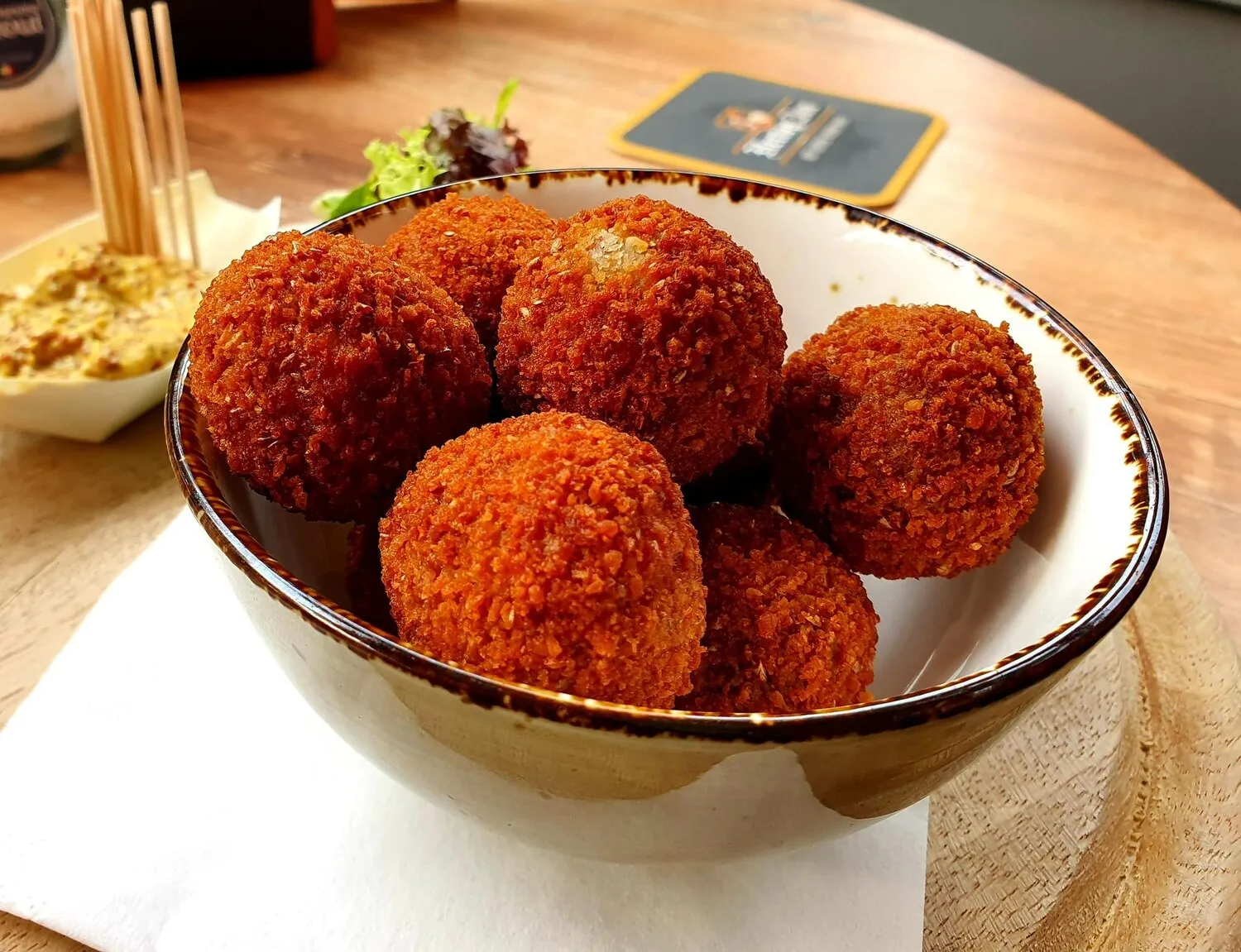
Kroketten
Dutch croquettes, typically filled with meat ragout, breaded, and deep-fried.
Nutrition Facts
* The % Daily Value (DV) tells you how much a nutrient in a serving of food contributes to a daily diet. 2,000 calories a day is used for general nutrition advice.
The croquette, as a general concept, has roots in French cuisine, appearing as early as the 17th century. However, the Dutch 'kroket' developed its own distinct character and became deeply ingrained in Dutch culinary culture, diverging from its continental cousins. The popularity of the kroket grew significantly in the 20th century, becoming a staple snack available everywhere.
The kroket is a quintessential Dutch snack, widely available and deeply appreciated. It's more than just food; it's a symbol of Dutch culture, often enjoyed as a quick, satisfying meal or snack, representing a sense of comfort and familiarity.
Vending Machine Staple
Kroketten are commonly found in vending machines throughout the Netherlands, particularly at train stations and snack bars. This accessibility reinforces their status as a quick and convenient on-the-go food.
Febo Famous
Febo is a well-known chain of automat restaurants in the Netherlands where kroketten are a primary offering. This further solidifies their place in Dutch fast-food culture.
Bitterballen Connection
The kroket is closely related to bitterballen, smaller, spherical versions of the same meat ragout filling. Both are popular snacks, especially served with mustard.
The kroket's flavor profile is characterized by a creamy, savory interior and a crispy, golden-brown exterior. Rich meat ragout is the star, offering a deep, umami flavor, while the breadcrumb coating provides a satisfying textural contrast.
The core of the kroket is a thick ragout, traditionally made with beef or veal. The ragout is enriched with butter, flour, broth, and often onions, herbs (like parsley), and spices (like nutmeg or pepper). This mixture is chilled until firm, then rolled into cylindrical shapes, coated in breadcrumbs, and deep-fried. The deep-frying process contributes significant flavor and crispiness, while the internal moisture maintains the soft filling. The specific flavor can vary significantly based on the meat used, the spice profile of the ragout, and the quality of the breadcrumbs and frying oil.
Ragout Consistency
Ensure the ragout is thick enough to hold its shape when cooled. If it's too runny, it will be difficult to form into cylinders and the breading won't adhere properly. Using enough flour (or cornstarch) and sufficient chilling time is essential.
Breading Technique
A proper breading technique is crucial for a crispy exterior. Use the standard breading procedure: flour, egg wash, and breadcrumbs. Ensure the kroketten are fully coated at each stage, and consider double-breading for extra crispiness.
Frying Temperature
Maintain the correct oil temperature (around 350-375°F or 175-190°C) for deep-frying. Too low, and the kroketten will absorb too much oil and become soggy. Too high, and the outside will burn before the inside is heated through.
Explore additional Snack dishes and restaurants
Explore SnackDiscover top dining spots and culinary experiences in Willemstad.
Explore WillemstadLearn more about the food culture, restaurant scene, and culinary heritage of Curacao.
Explore Curacao